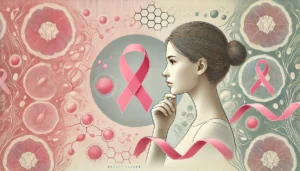Breast cancer is not just a disease—it is a national crisis in Pakistan. It is the most frequently diagnosed cancer among women and tragically, also one of the leading causes of cancer-related deaths in the country. Despite medical advancements and increased global awareness, the harsh reality remains: thousands of women in Pakistan lose their lives every year due to late diagnosis, lack of awareness, and limited access to proper treatment.
Shocking Statistics
-
1 in 9 women in Pakistan is at risk of developing breast cancer in her lifetime—the highest rate in Asia.
-
Over 90,000 new cases are reported annually.
-
An estimated 40,000 women die of breast cancer in Pakistan each year.
-
The disease affects women as young as 20, although risk increases with age.
These numbers are more than statistics; they reflect a dire public health emergency that demands immediate attention.
Why Breast Cancer Is So Lethal in Pakistan
1. Lack of Awareness
Many women in Pakistan are unaware of the signs and symptoms of breast cancer. Cultural taboos and societal stigma prevent open discussion about breast health, resulting in women ignoring or hiding symptoms until it’s too late.
2. Delayed Diagnosis
More than 70% of breast cancer cases in Pakistan are diagnosed at stage III or IV, drastically reducing the chances of successful treatment. Early detection is crucial, but limited access to screening and diagnostic tools hampers timely intervention.
3. Inadequate Healthcare Infrastructure
While major cities like Lahore, Karachi, and Islamabad have cancer treatment facilities, rural areas are severely underserved. There is a shortage of oncologists, diagnostic centers, and awareness campaigns outside urban centers.
4. Financial Constraints
Cancer treatment is expensive. For many families in Pakistan, the cost of chemotherapy, surgery, or radiation therapy is unaffordable, leading to treatment discontinuation or reliance on ineffective alternatives.
The Importance of Early Detection
Early detection is the key to survival. When diagnosed early, breast cancer is highly treatable, with survival rates exceeding 90% in many countries. In Pakistan, promoting Breast Self-Examination (BSE) and clinical screening can drastically improve outcomes.
Key Signs to Watch For:
-
A lump in the breast or underarm
-
Change in breast size or shape
-
Unexplained pain in the breast or nipple
-
Dimpling or puckering of the skin
-
Nipple discharge (other than breast milk)
Breaking the Silence: What Needs to Change
1. Education and Awareness Campaigns
We need nationwide, culturally sensitive awareness campaigns that reach women across all socio-economic backgrounds. Schools, workplaces, and communities must normalize conversations about breast health.
2. Community-Based Screening Programs
Mobile mammography units and breast health clinics can bring screening to underserved populations.
3. Government and NGO Involvement
The government must allocate more funds for cancer care and collaborate with NGOs to establish widespread diagnostic and treatment facilities.
4. Support for Survivors and Patients
Support groups, counseling services, and financial aid are essential to empower women battling this disease.


